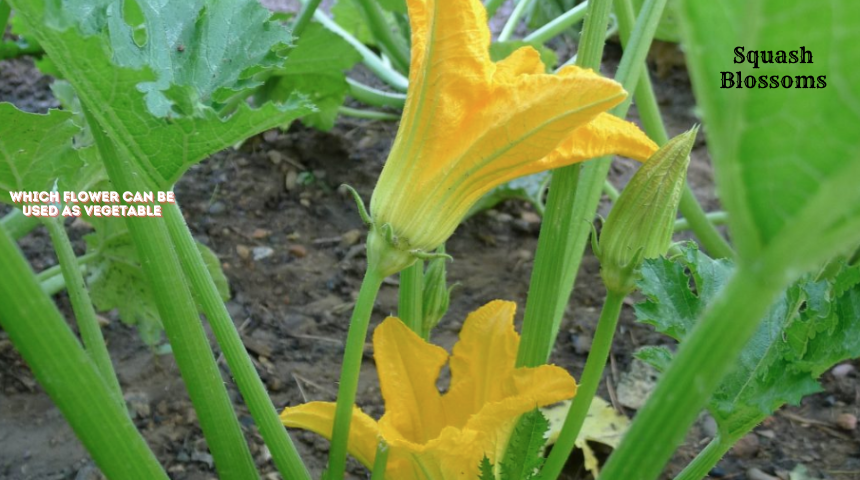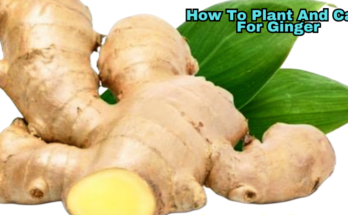As a gardener, I always love finding new ways to use plants in my kitchen. Which flower can be used as a vegetable. You might be surprised to learn that several edible flowers fit the bill.
Not only do they add beauty to the garden, but they also bring unique flavors to the table. One of my personal favorites is the squash blossom, which can be stuffed and fried for a delicious treat.
Other edible flowers, like nasturtiums, offer a peppery taste, perfect for salads. I find that growing these flowers provides both visual appeal and a tasty harvest.
It’s always rewarding to grow something beautiful that’s also practical. Many of these flowers are easy to cultivate, requiring just basic care. Adding them to your garden can expand your culinary creativity.
Which Flower Can Be Used As Vegetable?
One flower I often use as a vegetable is the zucchini blossom. These vibrant yellow flowers are edible and packed with flavor. I like to stuff them with cheese or lightly fry them.
Another favorite of mine is the nasturtium. It adds a peppery kick to salads and stir-fries. The artichoke is another flower I cook regularly. It’s both hearty and versatile.
I also enjoy cooking with squash blossoms, perfect for sautés and soups. Flowers like these bring a unique touch to any dish and are easy to grow in the garden.
Common Flowers We Eat As Vegetable
Many common flowers are surprisingly edible and are used as vegetables in various culinary traditions. Some popular examples include squash blossoms, especially zucchini flowers, which are often stuffed, fried, or added to soups.
Nasturtiums, with their peppery flavor, are used in salads and as garnishes, while the petals of daylilies can be stir-fried or sautéed.
Broccoli and cauliflower, which are technically flower heads, are among the most well-known flowers consumed as vegetables.
Additionally, the young buds of artichokes and capers are also eaten in savory dishes, offering unique textures and flavors.
These edible flowers not only enhance meals with their taste but also add visual appeal. Here are some flowers that are frequently consumed as vegetables.
Here’s an expanded description of each flower commonly eaten as vegetables
Banana Blossom
The large, purple-skinned flower of the banana plant is used in various Asian cuisines. Its slightly bitter flavor makes it a perfect addition to salads, curries, and stir-fries. It’s rich in fiber, vitamins, and antioxidants.

Banana flowers are the blooms of a species of wild banana known as Musa acuminata. This variety is thought to have originated in Malaysia, but it has since spread to regions like India and Myanmar.
These flowers develop at the end of the banana bunches, hanging from the tip of the stem. If not removed, part of the blossom will transform into the familiar banana fruit.
Similar to the fruit, these blossoms, which are shaped like teardrops, are edible and often used as a vegetable in countries such as India, and Sri Lanka, and Southeast Asian nations like Malaysia, Thailand, and Vietnam.
As the banana clusters grow, farmers may sometimes remove the purple-hued flowers to reduce the load on the banana branches, allowing more nutrients to be directed toward the banana fruits.
Squash Blossoms
These are bright yellow or orange flowers from the squash plant, especially zucchini. They have a mild, slightly sweet flavor and are often stuffed with cheese or herbs, then fried or baked.

Squash flowers are rich in calcium, essential for building strong bones; Iron, an essential mineral that the body needs to make hemoglobin; And squash blossoms are rich in vitamin C, which helps the body repair body tissues and helps the immune system function properly.
Moringa Flower
Healthy moringa flower vegetable. Also known as drumstick flower or ‘sahajan flower’, moringa flower can be consumed in the form of tea, fried, curried, and even as a vegetable. They are a popular cooking ingredient in East India.

The small, white flowers of the moringa tree are used in soups and salads, particularly in South Asian and African dishes. Moringa flowers are packed with vitamins A and C and are known for their medicinal benefits.
Pumpkin Flower
Similar to squash blossoms, pumpkin flowers are delicate and can be used in soups, stir-fries, or stuffed and fried. They have a tender texture and a mild flavor that complements various dishes.

Along with being a rich source of vitamin B9, pumpkin flowers are known to be full of health benefits. From boosting immunity and treating the common cold to building strong bones and improving eyesight, pumpkin flowers are known to be super-healthy.
Nyctanthes (Shiuli Flower)
Shiuli flowers, also known as Parijat, are commonly used in traditional Indian and Southeast Asian dishes.

They are often used in seasonal recipes for their delicate flavor and are believed to have medicinal properties. Nyctanthes (Shiuli Flower)In Bengali and Assamese culture, the flower of the Parijat tree is called the ‘Shefali flower’. These flowers are edible and can be roasted and eaten.
Water Lily
Water lily flowers and their bulbs are eaten in parts of Southeast Asia. The petals and seeds are often used in curries and soups. They have a mild, slightly nutty flavor, and are fiber-rich.

The Shapla flower plant is called Nal. The flower is removed from its head and the tree’s stem can be cooked and eaten with any fish.
When the flowers are mature, the fruit can be boiled or eaten raw. Again, shaluk grows at the base of the tree and can be eaten boiled or burnt.
Shapla is found abundantly in the swamps of India and Bangladesh. Shapla is the national flower of Bangladesh.
Sunflower
Would you be surprised to know that there is more to edible than sunflower seeds? Almost every part of this tall, beautiful plant is perfectly safe (and delicious) to eat when cooked and combined with the right ingredients.

Before cooking, remove the greens from around the base of the sprouts. Sunflower petals are also edible. Pluck them individually to toss in a salad. The taste is described as unique, bittersweet or slightly nutty.
Sunflower buds, young flower heads, and petals are edible. The taste is mildly sweet, and they are often used in salads or sautéed. The seeds, of course, are popular for snacking and cooking.
Cauliflower
This is perhaps the most widely known flower vegetable. The white flower head is consumed, and it can be roasted, steamed, mashed, or eaten raw.
Cauliflower is highly nutritious and rich in fiber and vitamins. A nutrient-dense, gluten-free vegetable, it’s an excellent source of fiber, antioxidants, health-promoting phytonutrients, as well as vitamins B and C.

You can get a lot of health benefits from cauliflower, whether you eat it raw, roasted, steamed or fully cooked.
Mahua Flower
A traditional edible flower in India, mahua is sweet and often used to make liquor, sweets, or fermented products. It’s also cooked in savory dishes and has medicinal properties.

Radish Flowers
The small, white, or pink flowers of the radish plant are edible and have a mild radish flavor. They are often used in salads or as garnishes, adding a peppery note to dishes.

Tamarind Flower
Tamarind flowers have a tangy taste and are used in Southeast Asian and Indian cooking. They are often added to soups and curries to give a sour flavor, similar to tamarind pulp.

Okra Flower
The white or yellow flowers of the okra plant are edible. They are often sautéed or used in soups. They have a mild taste, similar to the okra vegetable itself, and are packed with nutrients.

Pea Blossoms
Pea blossoms are delicate and sweet, often used in salads or as garnishes. The tender flowers are high in fiber and add a fresh flavor to various dishes.

Neem Flower
The small, bitter neem flowers are commonly used in South Indian cuisine, particularly in dishes like pachadi and rasam. They are believed to have detoxifying and medicinal properties.

Lavender
Lavender flowers are used in both sweet and savory dishes. Their distinct floral flavor is commonly used in baking, teas, and even salads. Lavender adds an aromatic touch to any recipe.

Dill Flower
Dill flowers, like the herb itself, have a subtle, tangy flavor. They are used in pickling, as well as in salads and soups, to add a mild herbaceous taste.

Dandelion
Dandelion flowers are slightly sweet and can be used in salads, soups, or even made into tea. Every part of the dandelion plant is edible, and the flowers are rich in antioxidants and vitamins.

These flowers not only contribute unique flavors and textures to dishes but also provide numerous health benefits.
How To Prepare Flowers For Culinary Usage Vegetables
Preparing flowers for culinary use involves a few essential steps to ensure they are safe and flavorful additions to your dishes. Start by selecting edible flowers, such as nasturtiums, pansies, or marigolds, and ensure they are free from pesticides or chemicals.
Gently rinse them under cold water to remove any dirt or insects, and pat them dry with a paper towel. Trim off any green parts, such as stems or leaves, as they can be bitter or tough.
For delicate petals, consider using them whole or lightly torn, and add them at the end of cooking to preserve their vibrant color and delicate flavor.
Store prepared flowers in a cool, dry place or a sealed container in the refrigerator if not using immediately. This careful preparation helps enhance both the aesthetic and taste of your culinary creations.
Conclusion
In conclusion, exploring which flowers can be used as vegetables opens up a delightful world of culinary creativity and garden exploration. Nasturtiums, with their peppery kick, are a fantastic addition to salads and stir-fries.
The zucchini blossom offers a mild, sweet flavor that’s perfect for stuffing or frying. Marigold petals bring a splash of color and a hint of citrusy zest to any dish, while chive blossoms add a subtle onion-like taste to your recipes.
Each of these flowers not only enhances your meals with unique flavors but also adds a touch of natural beauty to your plate.
By incorporating these edible blooms, you transform everyday dishes into gourmet experiences. So next time you’re in the garden, don’t just admire the flowers—harvest them and let your culinary imagination run wild.
With just a little preparation, you’ll find that these beautiful blooms make for extraordinary and tasty additions to your kitchen creations! Happy cooking!



